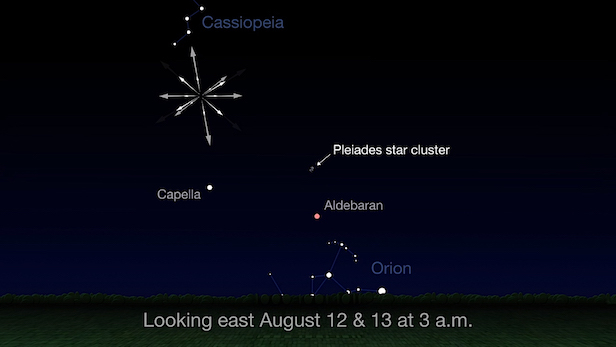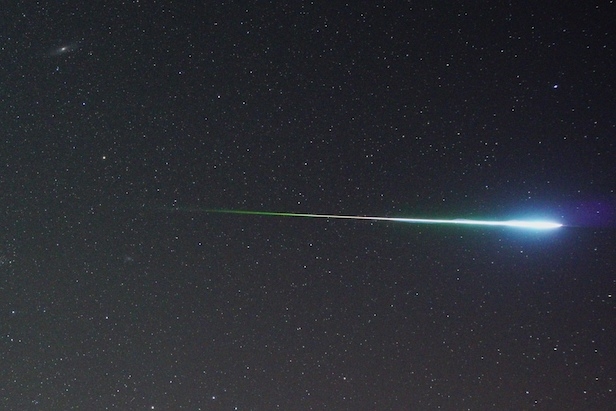Perseid meteor shower 2019: when, where and how to see it
Spectators can expect to see between 10-15 Perseids per hour or maybe slightly more at the peak
The bright Perseids are perhaps the most popular meteor shower of the year, but in 2019 they’ll be washed out by a close-to-full Moon during their peak.
Spectators can expect to see just 10-15 Perseids per hour or maybe slightly more on the peak, which is overnight tonight (12-13 August) according to NASA meteor expert Bill Cooke. Years without moonlight see much higher rates, and in outburst years (such as in 2016) the rate can be between 150-200 meteors an hour.
“Unfortunately, the Moon will be very close to full on the night of the peak, which will wash out the fainter Perseids,” Cooke said. “The Perseids are rich in fireballs, so you’ll still see Perseids; you just won’t see the show you’ve seen on nights when the Moon has not been around.”
“It won’t be a total wash-out, because the Perseids are rich in bright meteors, but the moonlight is going to spoil most of the show,” he added.
To best see the Perseids, go to the darkest possible location and lean back to observe as much sky as possible directly above you. The rates of Perseids visible will increase from about 10pm in your local time zone all the way through dawn, so the later you can look the better. Earlier in the night there will be fewer meteors, but the ones that appear will have longer tails as they graze along more of the atmosphere. Those in southern latitudes can look toward the northeast to see more meteors.

This NASA map shows where in the night sky the Perseid meteor shower will radiate from during the 2019 Perseids peak overnight on 12-13 August. The best time to look for Perseids is around 3 a.m. local time. Image credit: NASA/JP-Caltech
Skywatchers looking out for the Perseids should also be able to see Mars (visible until about 4am in your local time zone) and Saturn (visible until about 2am local time); Venus and Jupiter both set before the Perseids are best viewed (9:30pm and 11pm, respectively).
The key to seeing a meteor shower is “to take in as much sky as possible,” Cooke said. Go to a dark area, in the suburbs or countryside, and prepare to sit outside for a few hours. It takes about 30 minutes for your eyes to adjust to the dark, and the longer you wait outside, the more you’ll see. A rate of 60-70 meteors per hour, for instance, means around one meteor per minute, including faint streaks along with bright, fireball-generating ones.
Some skywatchers plan to camp out to see the Perseid meteor shower, but at the very least, viewers should bring something comfortable to sit on, some snacks and some bug spray. Then, just relax and look upward for the celestial show.
Keep up to date with the latest news in All About Space – available every month for just £4.99. Alternatively you can subscribe here for a fraction of the price!





